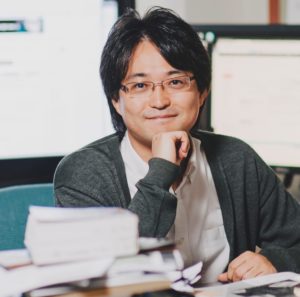In the biotherapeutic industry, many experts would agree that Chinese hamster ovary (CHO) cells are the workhorse.

“CHO cells are the preferred choice because of their human-like post-translational modifications that are more compatible with humans and are less immunogenic than other host cells,” says Dong-Yup Lee, PhD, associate professor in the School of Chemical Engineering at Sungkyunkwan University in the Republic of Korea. “Therefore, almost all biopharma companies use CHO cells to produce biotherapeutics, such as recombinant proteins and monoclonal antibodies, and thus have made significant progress in improving the performance of CHO cells and their cultures via cell-line and process development.”
Nonetheless, many of the metabolic processes going on inside CHO cells remains a mystery—one that Lee wants to decipher.
Most scientists working on understanding these cells, Lee explains, use “an empirical approach in which the CHO cells and the associated process are looked as a ‘black box’— relying on experience and intuition.” To develop new media, for example, Lee says that “companies perform massive amounts of cell-culture experiments with different combinations of media components in an empirical manner and the best-performing design is then cherry picked.”
With the CHO genome sequence available, though, modeling and computer simulation could be used in improving bioprocessing with these cells. In 2016, Lee and an international team of scientists published an article on a genome-scale metabolic model (GEM) of CHO cells. Recently, Lee and his colleagues described a significantly updated model.
When asked about the biggest benefits of this work, Lee says, “Basically, we can simulate lots of conditions using the predictive model, which virtually replicates the cells and bioprocess like their digitalized twin, allowing us to narrow down the scope of experiments significantly with a very high success rate.” That saves time, money, and labor. “Since the publication of CHO GEM, it has been practically used in understanding the phenotypic traits of various parental cell lines and the performance of CHO clones in different media,” Lee notes.
“While the GEM has been successfully used to characterize cellular behavior of CHO cells at the cell-line level, it still had several limitations in predicting intracellular fluxes and identifying potential engineering targets, due to a large degree of freedom arising from an extensive and highly-interconnected metabolic network, and often exacerbated by inadequate cell-culture measurements.”
To improve the model, Lee’s team incorporated kinetic information that more precisely describes the metabolic states.
“This new modeling approach considers the catalytic efficiency of enzymes by constraining relevant kinetic parameters as well as the constraints on the total-enzyme capacity to limit the amount of carbon that can be metabolized within the cell,” his collaborator, Meiyappan Lakshmanan, PhD, at the Bioprocessing Technology Institute in Singapore, explains. “This inclusion of the total-enzyme capacity constraint along with kinetic parameters improves prediction of the intracellular metabolic flux and makes realistic predictions with very few extracellular measurements.”
The advances in Lee’s latest model offer many opportunities to improve bioprocessing with CHO cells via big data-driven Digital Twins. As an example, one deep-learning model transforms “the real-time culture profiles into virtual predictions of metabolic changes, cell growth, and recombinant product synthesis.” That allows the scientists to “effectively identify key engineering targets and design various media/feeding strategies to control the product quality,” Lee says.
Improvements like these will turn CHO cells into even more capable workhorses for advanced biomanufacturing.


